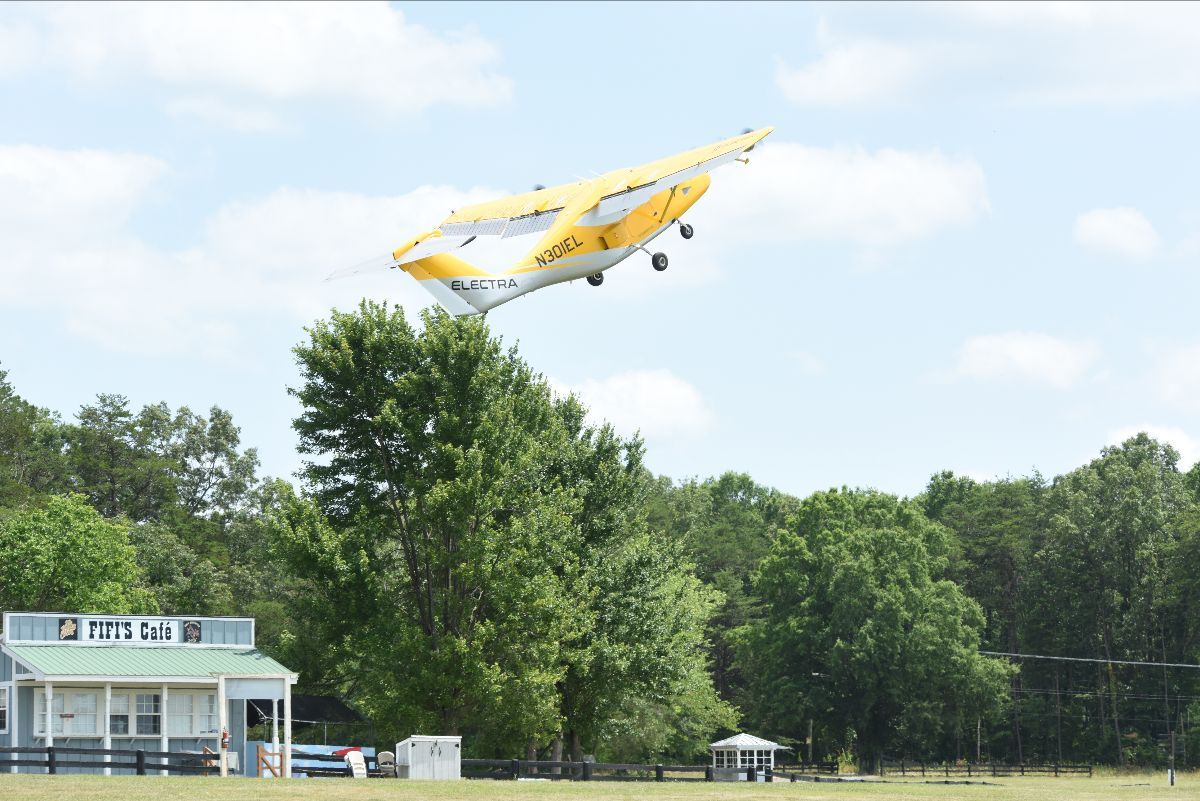Electra’s Goldfinch prototype hybrid-electric short takeoff and landing (eSTOL) aircraft has completed off-runway test flights, successfully taking off and landing in distances of less than 150ft.
The EL-2 Goldfinch technology demonstrator was flight-tested from a grass field near Electra’s facility in Manassas, Virginia. The aircraft flew a series of take-offs and landings from a grass area and demonstrated the maximum performance climb-out of 32 degrees that would be used in many military missions.
During the tests, its batteries were charged in-flight by the hybrid propulsion system, showing that the aircraft requires no charging infrastructure.
One of the roles Electra is developing its eSTOL aircraft for is as a small highly fuel-efficient and cost-effective airlifter that supports agile combat employment and expeditionary missions, while reducing the operational energy footprint.
Small, affordable, runway-independent eSTOL aircraft could also alleviate demand on larger, few-in-number, high performance fixed wing and rotorcraft platforms in a contested logistics environment.
“The Electra eSTOL technologies increase the number of available landing sites by orders of magnitude relative to traditional fixed wing aircraft while providing for higher cruise speeds, lower costs, and lower noise than vertical lift solutions. These first flights from a field demonstrate the beginnings of this strong capability that we will continue to develop,” said JP Stewart, Electra’s vice president and general manager.
In addition to the grass operations, the test campaign included acoustic data collection to validate the low-acoustic capabilities of the eSTOL technologies. The aircraft achieved quiet operations of under 55 decibels at 500ft overflight, a sound level comparable to human conversation. At typical cruise altitudes, the aircraft will be inaudible over background noise. Later flights will progress to even rougher and more confined areas as the test program continues.

Electra is developing the production aircraft to carry nine passengers or 2,500 lbs (1,100 kg) of cargo up to 500 miles (800km) while still providing the STOL, austere operations, and low-noise capabilities. Aircraft certification and entry into commercial service under FAA Part 23 regulations is targeted for 2028.




